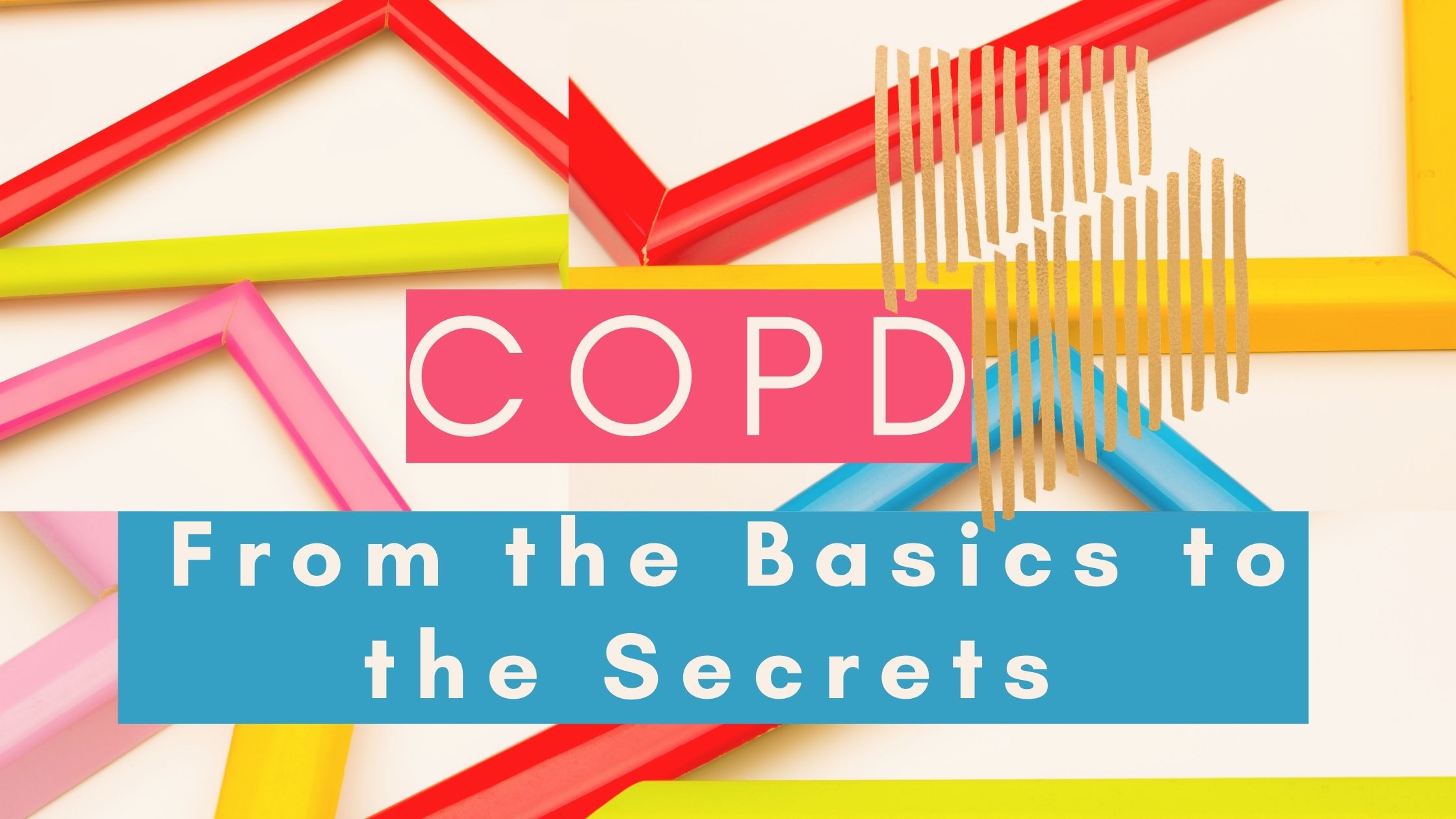
Chronic respiratory diseases (CRDs) are diseases within your airways and other parts of your lungs. Some of the most common CRDs are chronic obstructive pulmonary disease (COPD), asthma, pulmonary fibrosis, occupational lung diseases, and pulmonary hypertension. In this particular article we are focusing on COPD, but a lot of the information can be related to other CRDs.
There are a lot of basics your doctor will tell you about COPD once you are diagnosed, but as with anything in life, there are some things that cannot be explained, and instead you learn from experience.
Once you are diagnosis with COPD, there is no straight path you take, there are left turns and right turns obstacles big and small, all of which you will learn to go through. You will learn how to find ways to live with this disease, and we are here to not only help you live with COPD, but live a high quality life with COPD.
You will learn along the way, what COPD triggers are the most harmful to you and how to avoid them, you will learn what foods cause bloating in your body, and how to fit exercise into your daily routine.

While your doctor may suggest healthier habits and give you tips for living a healthier lifestyle, you are the one who has to go home and live with COPD, so you will have to determine how to follow your doctor’s advice in the most effective way possible, and this isn’t always black and white.
We designed this resource guide to help you navigate the reality of living with COPD, if something applies to you take it, if not leave it behind. Everyone is different and COPD affects every individual differently so it is important to listen to your body and mind to get the best possible treatment for your COPD.
COPD is commonly Misdiagnosed

One of the most important things to discuss about COPD, is the diagnosis. First of all, in many cases, people who have COPD are not to be diagnosed until the disease has progressed into a more severe state. More than 16.4 million people have been diagnosed with COPD, but millions more may have the disease without even knowing it.
It is increasingly common to miss the warning signs of COPD early on, as the beginning stages can often be chalked up to “getting older”. Therefore, COPD is often not found until the disease is very advanced, when there is something clearly wrong. This is alarming, and serious action should be taken to prevent it because COPD is a progressive disease, meaning it gets worse over time. If you catch COPD warning signs early, the sooner you can start to treat COPD and slow down the deterioration in your lungs.
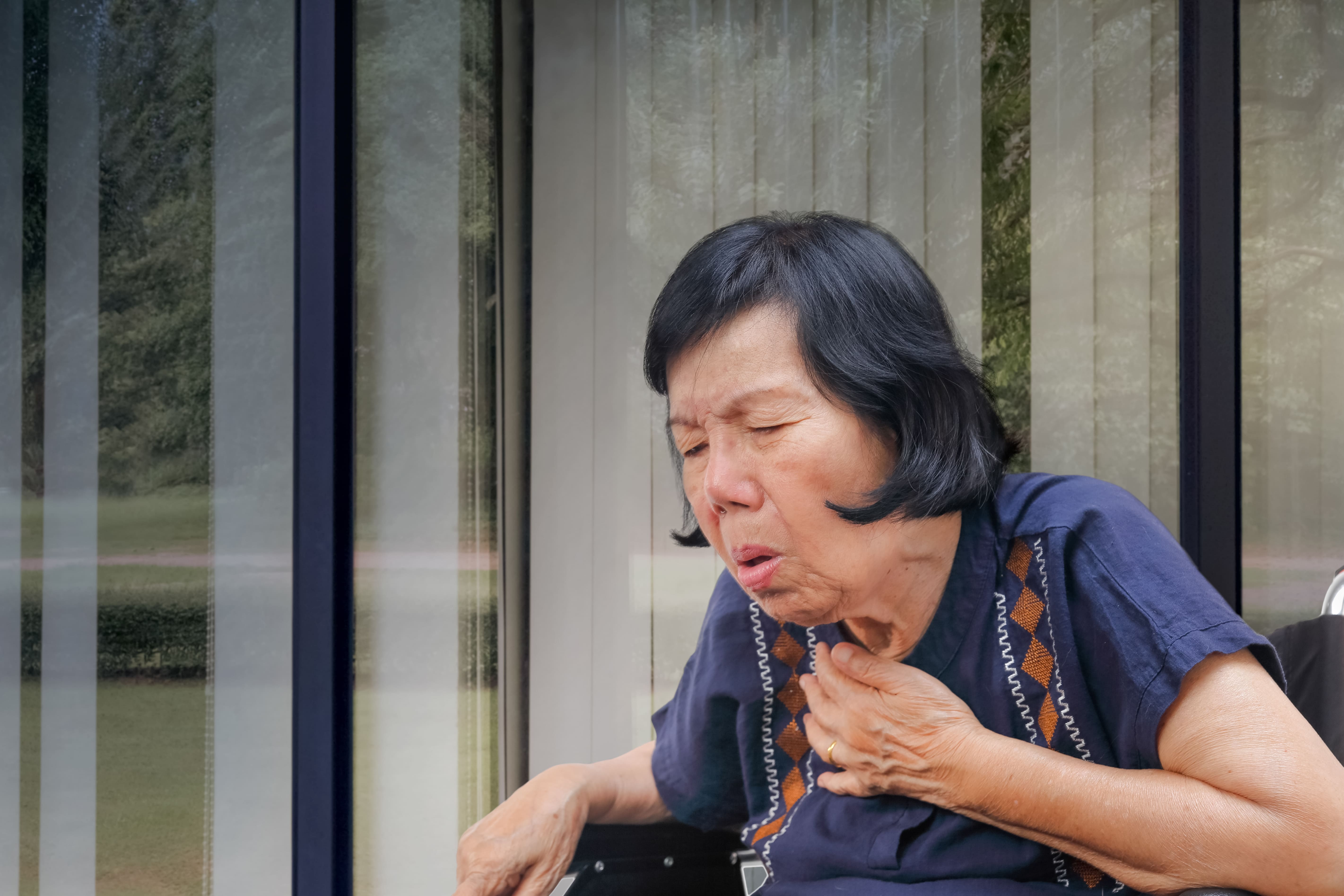
Some of the symptoms of COPD are similar to the side effects of “getting older.” If you think you have even mild symptoms of COPD, tell your doctor as soon as possible so they can test you.
Here are some early warning signs to look out for:
- Shortness of breath, especially during physical activities
- Wheezing
- Chest tightness
- A chronic cough that may produce mucus in a clear, white, yellow or greenish color
- Frequent respiratory infections
- Lack of energy
- Unintended weight loss (in later stages)
- Swelling in ankles, feet or legs
You should be considered for diagnosis of COPD if you experience symptoms of a chronic cough, sputum production, dyspnea and a history of exposure to risk factors for the disease.
{{cta('43b79c5e-6bd6-4f02-ac27-2d038d20c146','justifycenter')}}
To diagnose your condition, your doctor will look into you medical and family history before they look at your signs and symptoms. You should also bring up any exposure you've had to lung irritants — especially if you smoke cigarettes or are exposed to cigarette smoke a lot smoke.
Be Careful to Avoid COPD Flare Ups
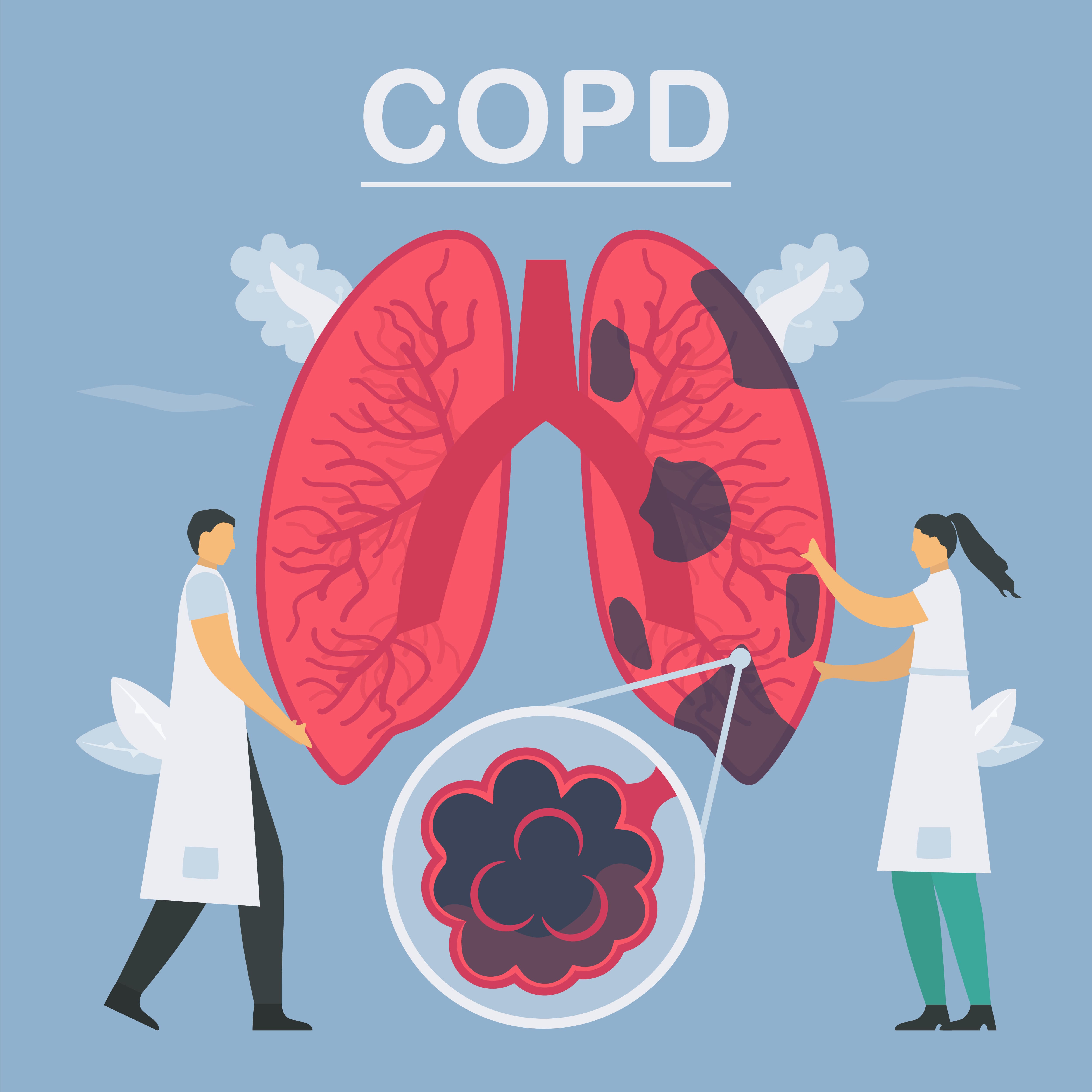
If you have COPD, you are also likely to experience COPD exacerbations, during which your symptoms become worse than the usual day-to-day symptoms. These episodes can be long-lasting and persist for at least several days, and in some cases you may need to seek medical attention.
There are many triggers of COPD exacerbations, and your trigger may be different than someone else's, but here is a list of some common triggers that you can work to avoid:
- Smoking
- Second-hand smoke
- Air pollutants
- Dust
- Dust mites
- Clean products such as bleach
- Indoor allergens like animal dander
- Outdoor allergens like hay and pollen
- Cold dry outdoor air during winter
- Hot moist steam from showers
If you have COPD it is best for you to avoid these triggers listed above. We wrote a resource guide for people who want to create a COPD safe living space inside their home, you can read it by clicking here.
There is No Cure for Chronic Lung Diseases
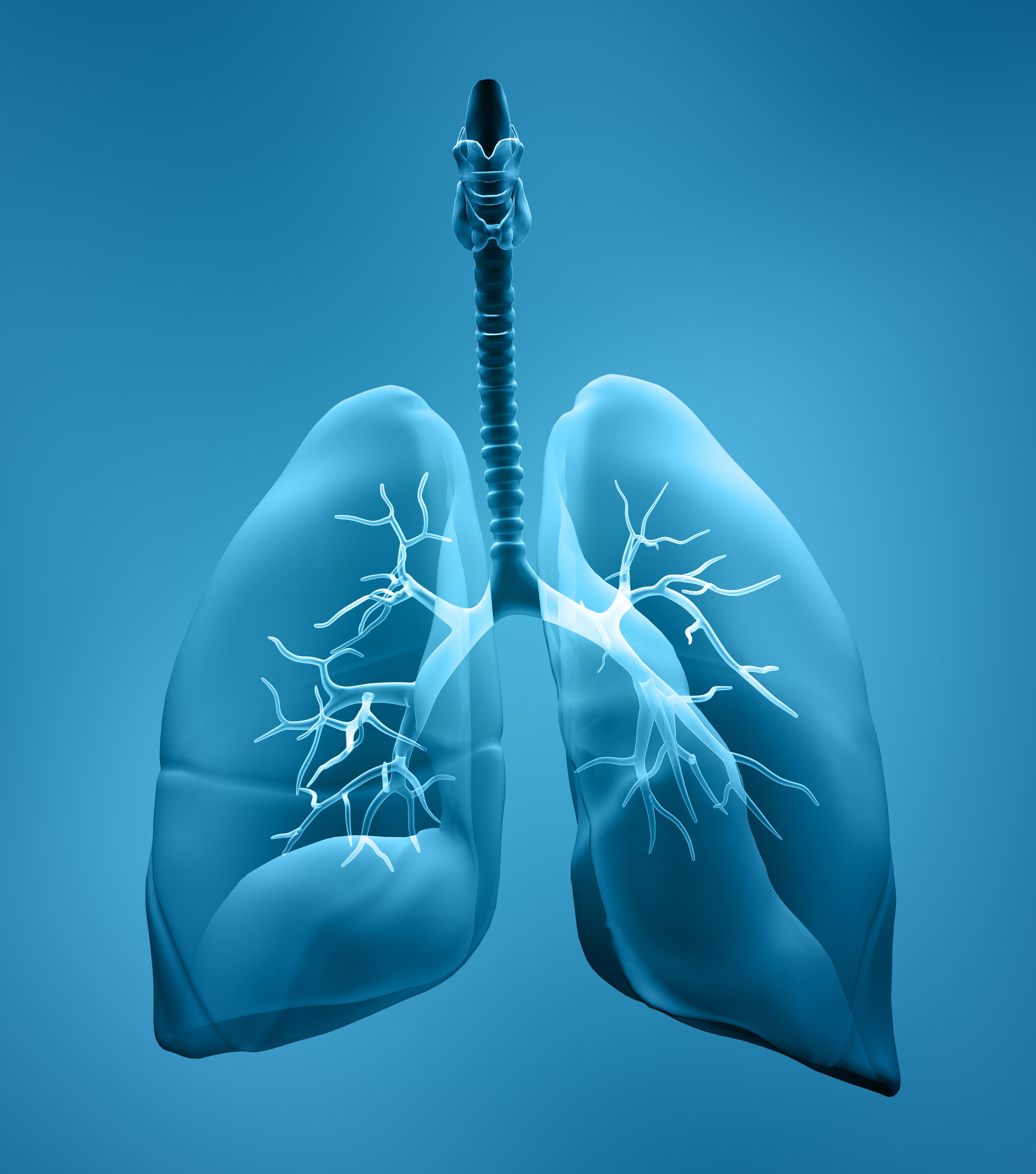
CRDs including COPD are not curable, however, various forms of treatment are available. Certain treatments such as supplemental oxygen therapy, can improve shortness of breath and help control symptoms and increase the quality of life for people with the disease.
COPD gets worse over-time, and without the proper treatment, COPD will cause major health issues, and even lead death.
COPD is Commonly Cause by Smoking and Air Pollutants
In addition to tobacco smoke, you can also develop COPD by inhaling other risk factors including air pollution, occupational chemicals and dusts, and frequent respiratory infections during childhood.
COPD is Diagnosed by Your Doctor with a Series of Tests
Common COPD tests are as follows:
Lung (pulmonary) function tests
These tests measure the amount of air you can inhale and exhale, and whether your lungs deliver enough oxygen to your blood.
Chest X-ray. A chest X-ray
X-rays can show emphysema, one of the causes of COPD. An X-ray can also exposure or rule out other lung problems or heart failure.
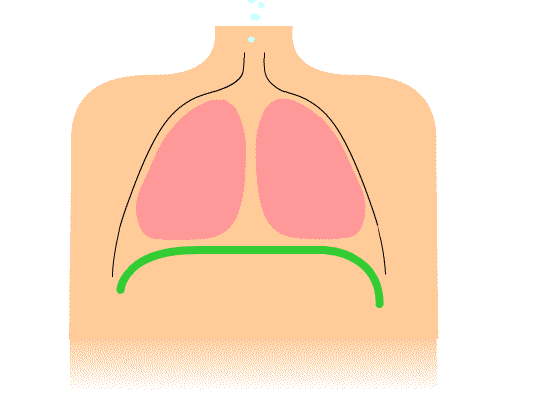
CT scan. A CT scan of your lungs can help detect emphysema and help determine if you might benefit from surgery for COPD. CT scans can also be used to screen for lung cancer.
Arterial blood gas analysis
This is a blood test which measures how efficient your lungs are transferring gases. So this test specifically looks at the oxygen in your blood and the removal of carbon dioxide.
Laboratory tests
Lab tests will not be used to diagnose COPD, however they can be used to find the cause of your symptoms, and rule out other respiratory conditions.
Spirometry
This is a test designed to diagnose chronic obstructive pulmonary disease (COPD), so it measures how deeply you can breathe and how fast air can move into and out of your lungs. Low results from a spirometry test can be consistent with COPD, but also may not be specific to COPD because it can be caused by other lung diseases and poor performance during testing.
Because COPD develops slowly, it can be hard to diagnose COPD accurately, which is why it is frequently diagnosed later in life, mostly in people 40 years or older.
You Can Treat COPD
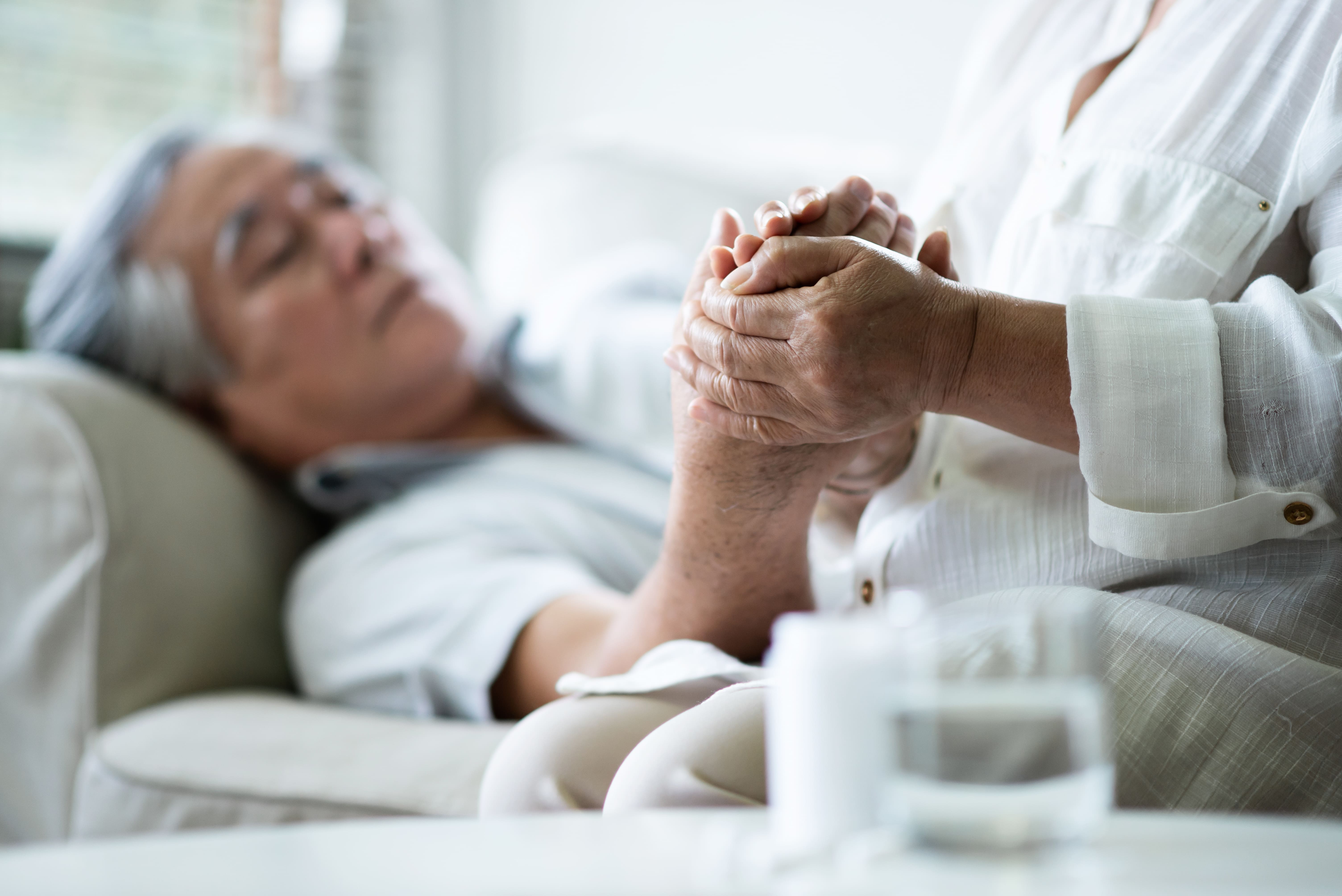
While there is no cure from COPD, or other CRDs, you can treat your disease and ease the symptoms. With the correct treatment, medications, and healthy habits you can even slow down the progression of your COPD.
Oxygen therapy is one of the COPD treatments that can extend your life expectancy.
Eating healthy foods that do not cause bloating will help you feel less short of breath.

Exercising or walking regularly strengthens your airways and lung muscles, which helps you manage COPD symptoms more effectively.
Medications, like short-acting bronchodilator help open your airways to make breathing easier in emergency situations, and during a COPD exacerbation. Medications can make the recovery process easier.
If you Need Supplemental Oxygen your Doctor will Prescribe it to You
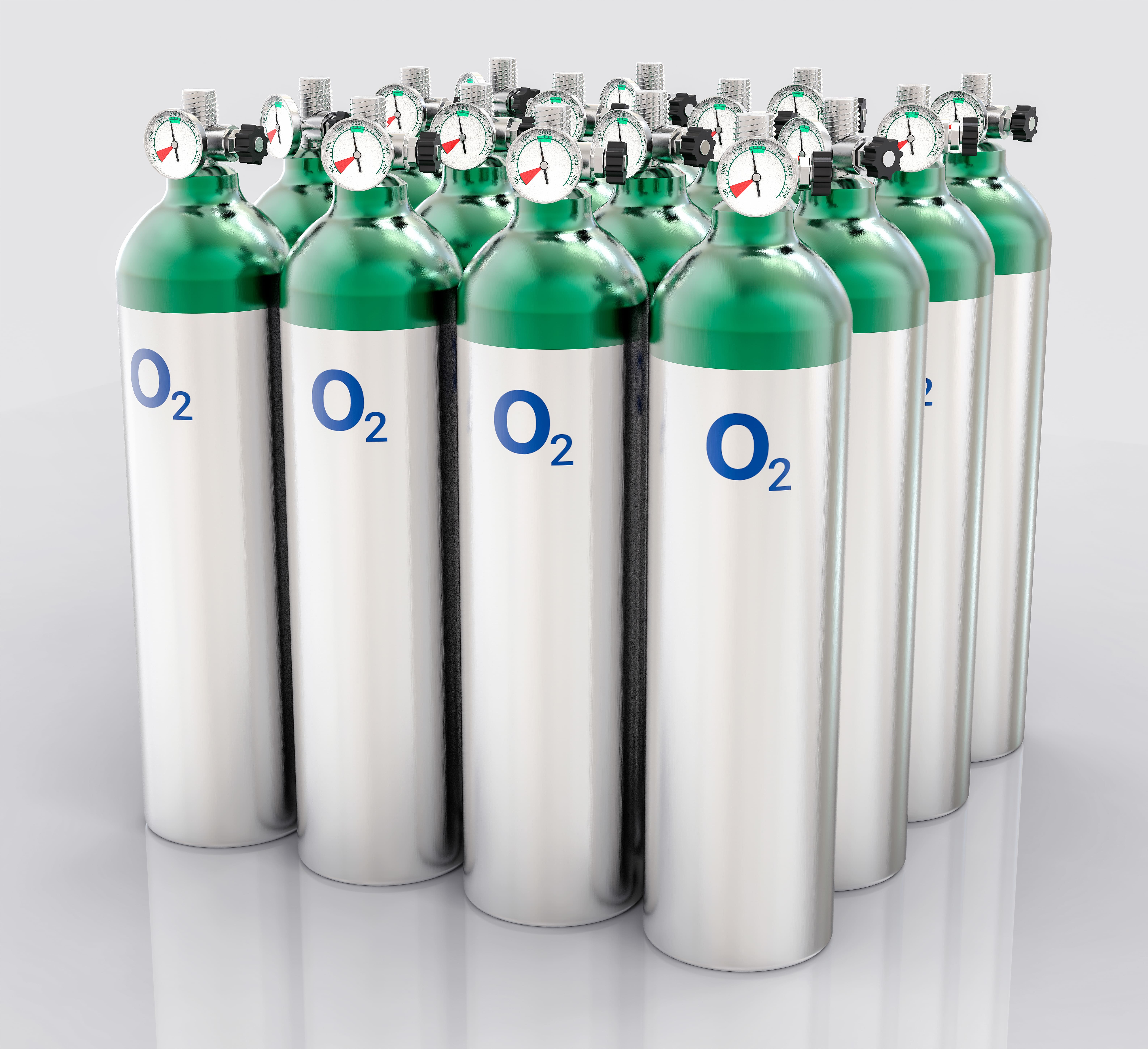
Supplemental oxygen therapy is a life saving treatment for respiratory patients with low blood oxygen levels. You can be administered oxygen through a liquid oxygen tank, compressed oxygen gas canisters, or a portable oxygen concentrator (POC). All of these methods feed oxygen to the user through an oxygen nasal tub or face mask.
The biggest difference between each of these methods is the tanks and canisters have a finite amount of oxygen that must be refilled, whereas a POC takes ambient air from its surrounding and purifies it into medical-grade oxygen. POCs also runs off of batteries so it will have to be re-charged.
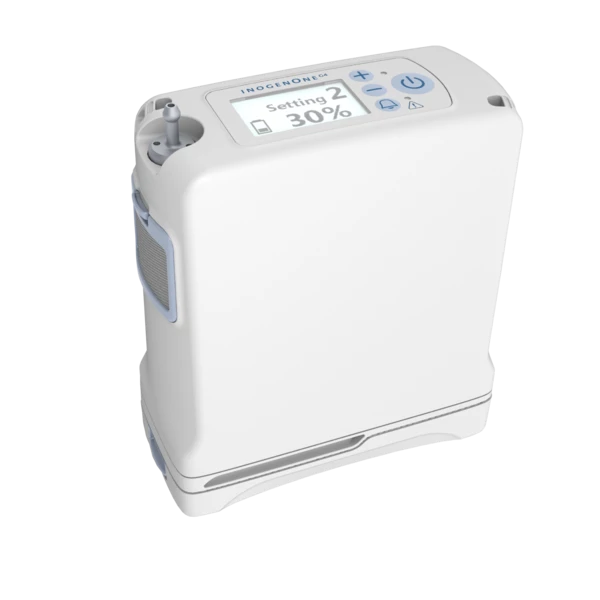
Oxygen therapy will be prescribed to you by your doctor after undergoing tests that will measure your current oxygen intake and transfer of gases in your lungs. If you have Hypoxemia, meaning you have low blood oxygen levels, your doctor will prescribe you a flow rate and give you recommendations for an oxygen device.
You will then want to get in contact with an oxygen device distributing company, possibly in your local area. For example you can google search something like, Denver, Colorado oxygen supplies, and LPT Medical will pop up, same goes for Boca Raton, Florida oxygen equipment. This is one way to find portable oxygen concentrators for sale near you, but you can also order POCs from around the nation and they can be shipped to you.

If you are going to be using an oxygen tank, it is essential there is an oxygen delivery company near your home, because they will have to come and replace empty tanks with filled tanks weekly.
LPT Medical is a family owned and operated business, and while we do a lot of local oxygen sales in Denver and Boca Raton, we also work with customers nationwide. If you are in the market for a portable oxygen concentrator, call us at 1-800-946-1201 so we can help find you an oxygen device that fits your needs.
Too Much Oxygen Can be Dangerous
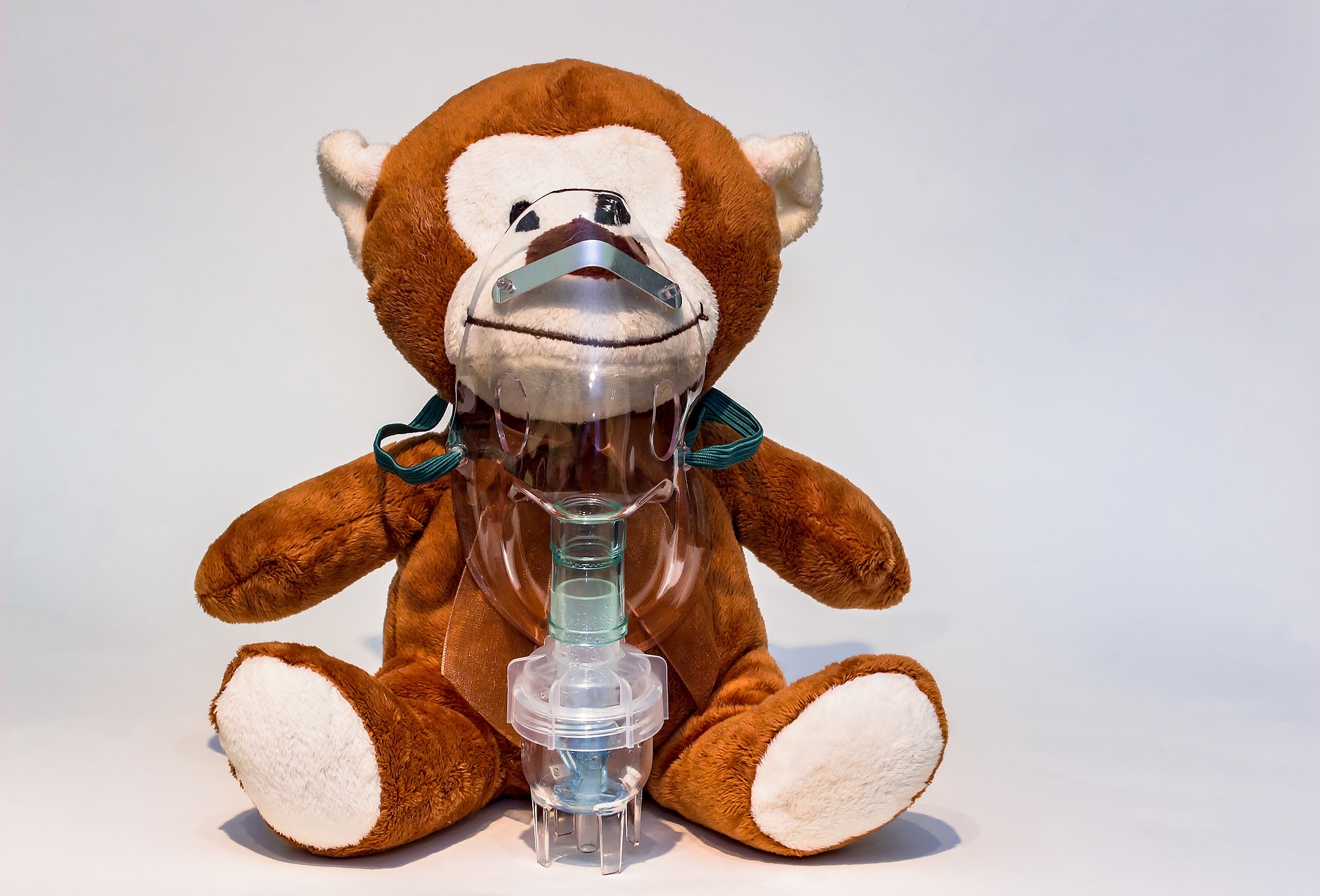
The reason it is crucial to go through a licensed oxygen distributor like LPT Medical, is because we make sure to look at your doctor’s prescription before we recommend an oxygen device to you.
We would recommend devices like the Caire Freestyle Comfort to an oxygen user with a pulse flow rate of 630 - 840 LPM. On the other hand, if you need a continuous flow of oxygen of about 0.5 - 1.0 LPM you would need a device like the Respironics SimplyGo.
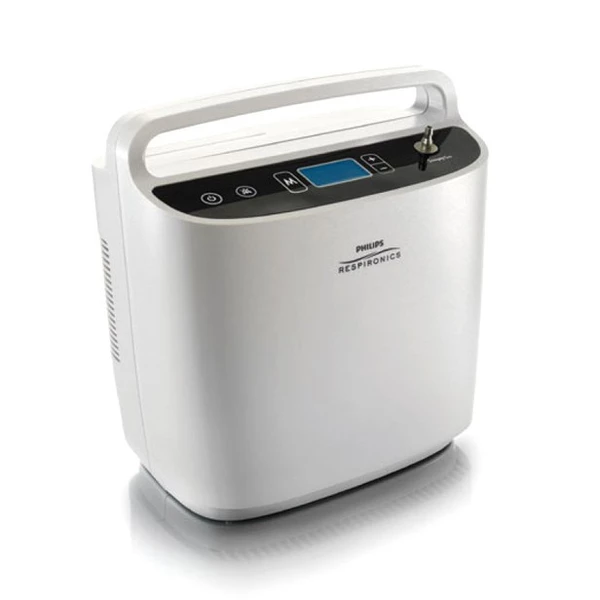
If you started to take oxygen more often than your doctor recommended or upped the dosage, you would start to experience something called oxygen toxicity or oxygen poisoning, and this is very dangerous. The first sign of oxygen toxicity, manifests in your Central Nervous System, and you may start to experience things like:
- Visual changes
- Tunnel vision
- Ringing in the ears
- Nausea
- Twitching (especially of the face)
- Behavioral changes (irritability, anxiety, confusion)
- Dizziness
If you continue to use excessive amounts of oxygen, pulmonary toxicity will begin to occur as a result of too much oxygen in your system. After a certain amount of time with too much oxygen saturation tracheobronchitis or inflammation of the upper airways will start to negatively impact your respiratory system.
There will be a decline in your lung function, alveolar damage, and soon acute respiratory distress syndrome will onset. This could all eventually lead to collapse of your alveoli, also known as atelectasis.
The bottomline is that it is very important to follow your oxygen prescription as an oxygen patient. Other folks at risk of oxygen toxicity are deep sea divers. Be sure to ask your pulmonary doctor and respiratory specialist any questions you have, and clearly communicate your confusion.

Your Oxygen Prescription Will Vary Depending on the Severity of you Your Disease
It is possible that you will have to adjust your oxygen levels while you exercise, compared to while you rest. Some people will need to use oxygen 24/7 and others may only need it while they are exerting themselves physically.
All of this will depend on your condition, so you can’t always ask for advice from others who also have COPD or another oxygen user. Their oxygen dosage may be completely different than yours. The best way to get the most out of your oxygen therapy is to understand you and your condition, your oxygen prescription, and how to use your portable oxygen concentrator or oxygen tanks.
Portable Oxygen Concentrator Costs
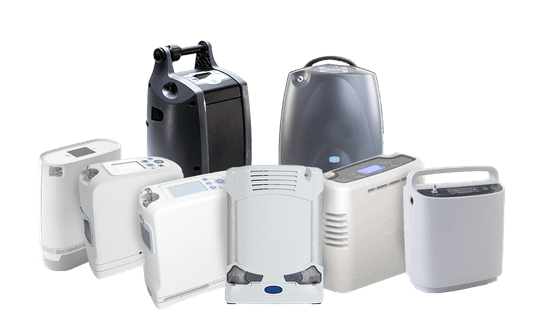
Our portable oxygen concentrators costs range anywhere from $999 - $3,000 depending on the unit you are interested in. We also offer refurbished units so if you are on a tight budget we are still happy to work with you to get a reliable oxygen device. Be sure to call us to find out of our current specials that we update throughout the year on select devices!
COPD is Also Common in Women
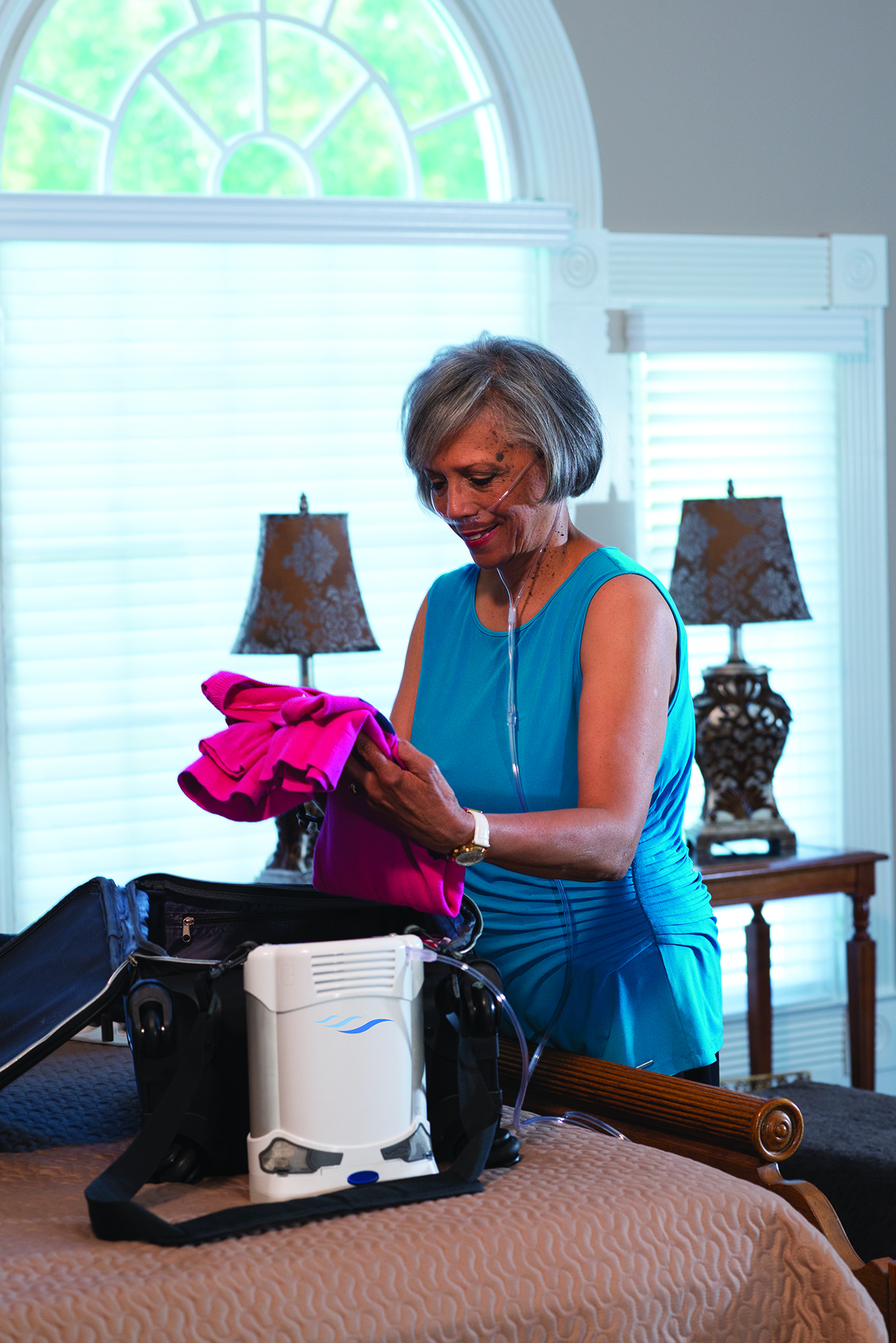
At one time, tobacco was predominantly used by men and so COPD was subsequently much more common in men than women. Nowadays, there are more deaths resulting from COPD in women than in men. There are four reasons why this shift happened.
1. In the late 1960s, a large influx of women started smoking as a result of tobacco and advertising companies heavily targeting women.
2. Also, women are more vulnerable than men to lung damage from cigarette smoke and other pollutants because their lungs are smaller.
3. Estrogen has been noted to also play a role in worsening lung disease.
4. Lastly, because COPD has always been thought of as a “man’s disease” Women are often misdiagnosed. Many doctors do not think to check for COPD in women and miss the proper signs and therefore women go undiagnosed and untreated much more often..
Learn more about all things COPD in women
COPD is a Leading Cause of Death
COPD is the third leading cause of death in the United States, about 140,000 American die from COPD each year.
The total deaths from COPD are projected to increase unless urgent action is taken to reduce the underlying risk factors, especially tobacco use.
Underlying risk factors of COPD that need to be mitigated to reduce COPD deaths include:
- Exposure to tobacco smoke
- Occupational exposure to dusts and chemicals
- Exposure to fumes from burning fuel
- In some cases genetics
{{cta('fa8abc2a-1e88-4fa3-82fd-1cb5b9ed43b2','justifycenter')}}
Overview
If you think you could possibly have COPD, or if you have recently been diagnosed with COPD we hope that you found this guide into the basics and secrets of COPD useful in some way.
If you learned anything about yourself and your condition, please leave a comment below or share with someone that might learn something too!
There is so much more information about COPD that you will learn through the process of living with COPD, and you can find more resources about oxygen therapy and COPD related article by clicking here.

